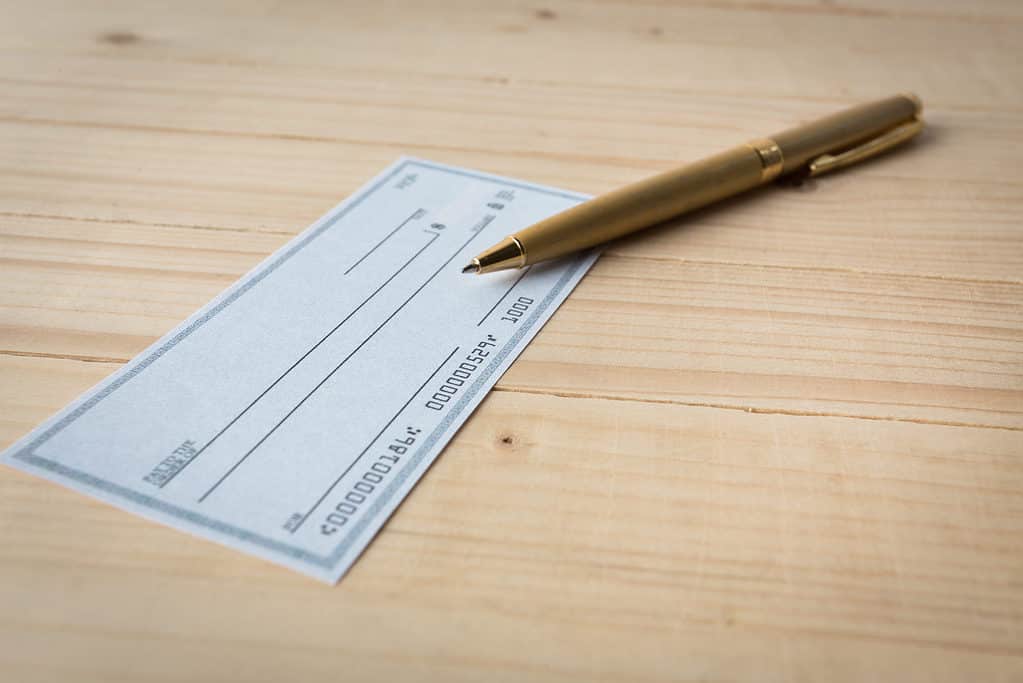While many payment processes have migrated to electronic issuance, many still require at least a copy of a check to provide documentation for records keeping, auditing and reporting. For many businesses, the question comes down to whether the company should order pre-printed check stock or blank check stock. In this article, we’ll share several reasons why you should order blank check stock instead of pre-printed checks.
There are multiple reasons blank check stock is the better choice, no matter the business in question or the purpose of the check.
Here is a quick rundown.

Account Security
Unfortunately, while so many things are electronic and convenient, some of that ease of use comes with an increased risk of fraud. Here are some statistics that prove that point:
- Check fraud accounts for over $18.5 billion in stolen funds annually per the FBI
- Each day, over a million checks are forged in the USA
- Prosecutors often fail to pursue check fraud cases because of other demands
- Check fraud amounts are usually only a few hundred dollars to a few thousand dollars
Each of those statistics plays into an environment that is easy to exploit if you are a criminal and led to an increase in attempted check fraud by over 40% between 2019 and 2021.
Pre-Printed Check Pose a Fraud Risk
Pre-printed checks are a check fraud risk. A check with account information is “found money” for the average criminal perpetrating check fraud. Worse, most businesses will not realize fraud has occurred until after the fact.
There are a few ways check fraud with pre-printed checks can occur:
- Someone steals a check with the account information on it, prints a dollar amount, and cashes it
- Employees steal checks and cash them
- A blank check is lost, and someone finds it
- Someone steals the information on the check and uses it to forge checks
Two Types of Crimes
Those examples cover both types of criminal acts: Crimes of opportunity and intent.
Crime of Opportunity
A crime of opportunity happens when someone commits a crime because the opportunity materializes. Maybe they got lucky, or maybe they were desperate. Regardless, they found a check with all the correct information on it, and all they had to do was figure out how to fill in the dollar information and sign it.
Crime of Intent
With crimes of intent, an employee or other individual goes out of their way to secure a pre-printed check to commit fraud. Then, they steal or forge new checks with the information from a pre-printed check. In these cases, the criminal is usually a professional scammer looking for an opportunity to commit the crime.
Why Either Matter
You may be wondering why it matters whether a crime was because an opportunity arose or someone intentionally committed fraud. The critical difference is that most crimes of opportunity get committed by people who make a very wrong decision but are not career criminals.
They only committed the crime because the check with the right information was in their face. If the check requires the information to be printed with the dollar amount and to whom the check was made out, the opportunist will usually not risk getting caught.
With a crime of intent, the criminal was looking for an opportunity. Having a pre-printed check with all the information was made to order for them. Career criminals usually do not act impulsively and for the real pros, getting their hands on a pre-printed check is a veritable bold mine.
Banks Miss Fraud a Lot
The average bank employee recognizes obvious fraud, but knowing something in practice versus catching it in real life are two different things. So while the bank might fully intend to catch all fraud, the only way their employees can do so is ifcan is if there are red flags on the check.
Additionally, since most fraud cases do not involve checks worth tens of thousands, many banks do not catch them until the company catches on and alerts the bank. If the check amounts were larger, it might set off red flags and warrant a second look, but in most cases, overworked and underpaid bank staff do not catch what might be a fraud and initiate follow-up.
How Blank Check Stock Fights Fraud
Black check stock alleviates any temptation for crimes of opportunity and severely hampers crimes of intent. The reason is the process a blank check goes through when it is issued:
A payment request is made. Financial staff use software to input the amount of money requested and the contact data of the person receiving the check. The check gets printed and issued to the person receiving the check.
Before the account data gets printed onto the check at the point of issue, a person looking to commit fraud finds only a blank field. Once the check gets printed, it is issued directly to the recipient, and there is very little opportunity for someone to access the check.
There are only a few ways fraud can be committed at that point:
- Steal the check at the point of issue
- Intercept the check while in process
- Steal the check from the person who is receiving it
Further, unless they assume the recipient’s identity, the only other way to commit fraud is to forge a new check with the account number.
Safer, Not Fool-Proof
While blank check stock goes a long way in thwarting fraud, a determined criminal can still figure out how to defraud the check’s issuer. However, it is much more difficult, and the average person will not go to those lengths. There is also much more risk as committing fraud in this scenario usually is accompanied by several other felonies.
Hardcopy Checks Are Not Obsolete
It is difficult to find a business now that does not have some part of their payment process automated. However, that does not mean that paper checks are a thing of the past. Many organizations still produce a hard copy of a check and issue that in addition to any electronic transfer documentation.
Sometimes, a hardcopy check provides a tangible paper trail if the payment gets contested. In other cases, a hard copy of a check can be easier to get ahold of than a single electronic transfer.
Hardcopy checks also allow for electronic signatures. Since 1996 and changes in the negotiable instrument definition, organizations and individuals have been able to accept email, fax, letter, and phone authorization to supplement a signature.
Transactions processed that way can then be printed out on blank checks, providing a tangible instrument to verify the authorization of the funds transfer.
Easier Storage
Pre-printed checks must be secured and stored. In addition, there are costs associated with the distribution and tracking of pre-printed stock and necessary protocols to keep the pre-printed stock secure.
Blank check stock eliminates that. Because the check is blank, the only storage needed is the same type you would use for a regular ream of paper.
Even if the stock gets stolen, it is simply blank check stock. All the variable and static data and the MICR line are blank. Without that data, a check is just a piece of blank paper.
Freedom of Design
Many organizations want the ability to design their checks. With a blank check, an organization has the freedom to layout the check in any manner it wants. Some things that can be added to blank check stock include, but are not limited to a new logo or slogan, altering the signature line details, and printing a watermark to make duplication of the check extremely difficult.
Additionally, an organization can have unique designs for different accounts, types of checks, signatories, etc. With blank check stock, you can have as many check designs as you want. You can also alter the design or artwork on a check instantly instead of having to order a new print run.
Order Blank Check Stock Is Less Expensive
Since no printing costs are associated with blank check stock, an organization saves money immediately. There are also far fewer storage requirements, particularly in security and processing. Blank check stock also lets you print checks for multiple accounts instead of having to have a specific pre-printed check for specific accounts.
There also is no need to void check numbers if a paper jam occurs or pre-printed stock is damaged. All that is required with blank check stock is reprinting the check. Not having to void checks or order new stock saves on labor and materials.
Re-Ordering Is Seamless
When you want a new print run of pre-printed stock, you must go through the entire printing process, including getting proper approvals for drafts, allowing for printing, drying, and delivery time. If an error occurs, your options are live with it or do another print run.
With blank check stock, your ordering process is this: Call your blank check stock vendor and order blank check stock. You get your stock quicker, and you do not have to examine the finished product because there is nothing on it.
Final Thoughts
Checks still play a major role in business and individual payment processing. Blank check stock is more secure, less expensive, and easier to order and store. There is no good reason to stick with pre-printed check stock, given all that blank check stock lets you do.



















